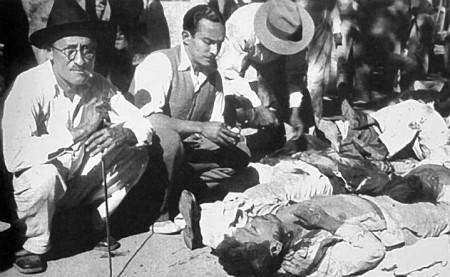In 1932, a peasant revolt led by Agustin Farabundo Marti, was crushed by the Salvadoran military. The army killed anyone who looked Indian nearly exterminating the Pipil culture of El Salvador in a massacre estimated to have taken between 10,000 and 30,000 lives.
The Great Depression, which followed the Stock Market Crash on Wall Street in November 1929, was catastrophic for El Salvador. The coffee market collapsed, and with it the small nation’s economy. The landless poor grew even more destitute and tensions between peasants and the tiny land-owning elite escalated.
In December 1931 a military coup replaced the labor government of Salvadoran President Araujo with the military dictator General Maximiliano Hernandez Martinez. One month later on the night of January 22, 1932, thousands of destitute indigenous peasants participated in a rebellion led by the Agustín Farabundo Marti and supported by the Salvadoran Communist Party.
The scale of government repression in the wake of the failed rebellion was unprecedented in the history of El Salvador. The army, the police, the Guardia National and the private forces of the hacienda owners engaged in a weeklong orgy of killing. The leaders of the insurrection including Agustín Farabundo Marti were captured and executed by firing squad.
During “La Matanza” anyone wearing indigenous dress or anyone simply thought to be associated with the rebellion was shot. In some cases, whole villages disappeared. Exact figures have never been known, but the death toll is estimated between 10,000 and 30,000 people. The dictatorship insisted that only 2000 were killed. For El Salvador’s indigenous population, the effects of the massacre went far beyond the immediate death toll. As it became increasingly dangerous to be identified as indio (Indian), traditional dress, language and customs largely disappeared.
Links:
- Read about The El Salvador Historical Memory Project: Museum of the Word and Image.
- Read about film: “Scars of Memory,” a film about the 1932 Salvadoran peasant uprising by the Director of the Museum of the Word and Image, Carlos Henriquez Consalvi and historian Jeffrey Gould
